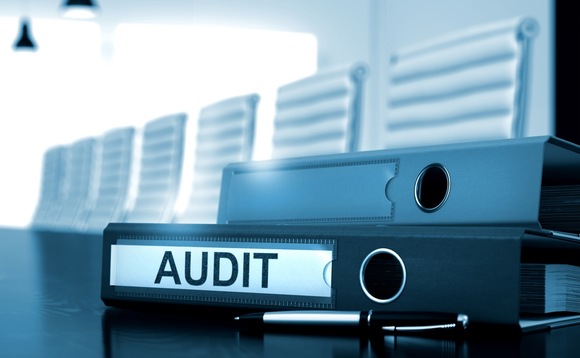
Auditors: the extra line of defence
If CDS skew spikes, some banks may be thankful for conservative accountants

Like hot pants and Ray-Bans, some things come in and out of fashion every few years. And so it goes for the credit skew trade, which is hot once again, as it was pre-crisis, in 2013 and now in 2016.
The trade is a simple arbitrage between a credit default swap (CDS) index and its single-name constituents. The spreads of these periodically diverge – more recently, the driver has been the fact that index CDS trades are subject to mandatory clearing while single-name CDSs are not.
But while in the past investment came from hedge funds - including one allegedly backed by Colin Fan, the former head of Deutsche Bank's investment bank, and five other bank employees, according to the Wall Street Journal – the difficulties in obtaining leverage, declining liquidity in the credit derivatives space and increased aversion to wearing potentially large negative mark-to-market positions has pushed them out of the frame in 2016.
This time around it is yield hungry, buy-to-hold players such as pension funds and insurers being tapped. Banks have been packaging up the skew and selling it in wrappers that turn it from a mark-to-market to accrual instrument. As long as the investors hold to maturity, say banks, they should capture a profit.
For some dealers, this is a handy way of offloading skew built up from their own CDS businesses. Dealers without an internal axe to sell on are said to have been sourcing skew from credit hedge funds, who have their own sources of cheap CDSs.
But with only a handful of basis points on offer from the trade, investors have to ramp up leverage to achieve any decent returns. A typical trade is leveraged 15 to 30 times, but traders say they have seen multiples of 40, and even 50.
Enter the accountants. The trade only works for banks if they can treat the CDS instruments on one side as a hedge for the skew note sold to investors. But at 50-times leverage, that means banks are asking accountants to bless the idea that a $10 million note is a hedge of $500 million of CDS positions.
Does this make sense? It depends who you ask, and not all auditors – or banks and investors for that matter – are convinced when dealing with such extreme leverage. The skew is volatile, and if an investor for some reason can't hold the product to maturity, the note principal could be wiped out – leaving banks on the hook for the rest. Some banks do not include protections such as early unwind triggers, exposing themselves to gap risk in the process.
An inability to get the correct accounting treatment from auditors is said to have kept some banks out of this market. Front-office traders might fume now, but if the skew gets volatile, perhaps they will be secretly pleased that their auditor is providing an extra line of risk management defence.
Only users who have a paid subscription or are part of a corporate subscription are able to print or copy content.
To access these options, along with all other subscription benefits, please contact info@risk.net or view our subscription options here: http://subscriptions.risk.net/subscribe
You are currently unable to print this content. Please contact info@risk.net to find out more.
You are currently unable to copy this content. Please contact info@risk.net to find out more.
Copyright Infopro Digital Limited. All rights reserved.
As outlined in our terms and conditions, https://www.infopro-digital.com/terms-and-conditions/subscriptions/ (point 2.4), printing is limited to a single copy.
If you would like to purchase additional rights please email info@risk.net
Copyright Infopro Digital Limited. All rights reserved.
You may share this content using our article tools. As outlined in our terms and conditions, https://www.infopro-digital.com/terms-and-conditions/subscriptions/ (clause 2.4), an Authorised User may only make one copy of the materials for their own personal use. You must also comply with the restrictions in clause 2.5.
If you would like to purchase additional rights please email info@risk.net
More on Structured products
A guide to home equity investments: the untapped real estate asset class
This report covers the investment opportunity in untapped home equity and the growth of HEIs, and outlines why the current macroeconomic environment presents a unique inflection point for credit-oriented investors to invest in HEIs
Podcast: Claudio Albanese on how bad models survive
Darwin’s theory of natural selection could help quants detect flawed models and strategies
Range accruals under spotlight as Taiwan prepares for FRTB
Taiwanese banks review viability of products offering options on long-dated rates
Structured products gain favour among Chinese enterprises
The Chinese government’s flagship national strategy for the advancement of regional connectivity – the Belt and Road Initiative – continues to encourage the outward expansion of Chinese state-owned enterprises (SOEs). Here, Guotai Junan International…
Structured notes – Transforming risk into opportunities
Global markets have experienced a period of extreme volatility in response to acute concerns over the economic impact of the Covid‑19 pandemic. Numerix explores what this means for traders, issuers, risk managers and investors as the structured products…
Structured products – Transforming risk into opportunities
The structured product market is one of the most dynamic and complex of all, offering a multitude of benefits to investors. But increased regulation, intense competition and heightened volatility have become the new normal in financial markets, creating…
Increased adoption and innovation are driving the structured products market
To help better understand the challenges and opportunities a range of firms face when operating in this business, the current trends and future of structured products, and how the digital evolution is impacting the market, Numerix’s Ilja Faerman, senior…
Structured products – The ART of risk transfer
Exploring the risk thrown up by autocallables has created a new family of structured products, offering diversification to investors while allowing their manufacturers room to extend their portfolios, writes Manvir Nijhar, co-head of equities and equity…








